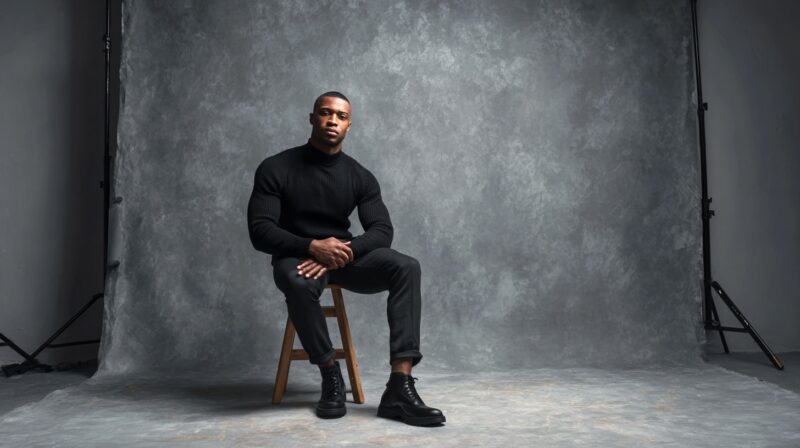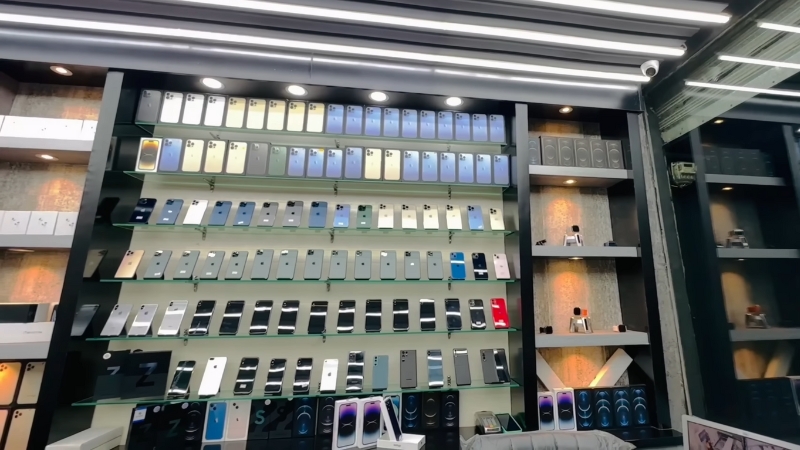A CV photo can be a decisive element in how recruiters perceive a candidate.
Subtle details such as lighting, posture, and expression all matter, yet the background color often sets the tone for first impressions.
The right color creates professionalism, approachability, and clarity, helping ensure attention remains on the applicant rather than distractions in the backdrop.
Choosing wisely can make a CV photo appear sharper, cleaner, and more in tune with industry expectations.
The Psychology of Background Colors
Advice about color psychology in job applications often leans toward exaggeration.
Claims that a specific shade guarantees trust, intelligence, or leadership can mislead candidates. Recruiters rarely interpret colors in such rigid terms.
Instead, they respond to how the photo looks overall in terms of clarity, balance, and contrast.
A background that aligns with the outfit and face projects confidence and professionalism, while one that clashes can feel distracting.
Cultural context also matters since colors hold different meanings across societies.
White may suggest professionalism in one culture, while in another it symbolizes mourning. Red can symbolize energy and power in some regions, yet caution or danger elsewhere.
What matters most is using color to support clarity and harmony rather than relying on symbolic interpretations.
Key considerations can be summarized as:
- Contrast matters more than symbolic color meaning.
- Recruiters notice clarity, tone, and balance rather than hidden messages.
- Cultural differences change how colors are perceived.
Harmony between subject and background builds trust more effectively than stereotypes about color psychology.
Neutral Backgrounds: The Industry Standard
Neutral tones remain dominant in professional photography because they keep attention on the subject without creating distractions.
Professional photography backdrops in shades like white, gray, or beige are commonly used for this reason, as they provide consistent and controllable environments that highlight the subject.
Each neutral shade brings different qualities, and recognizing them helps avoid missteps.
- White: Clean and universal, though problematic when paired with pale complexions or white clothing.
- Light gray: Safe, versatile, and polished, often the best all-around choice for different skin tones and outfits.
- Beige or cream: Warmer and more inviting, often chosen for creative or lifestyle-focused roles.
Neutral backgrounds highlight the face effectively and create consistency. Recruiters often expect these tones because they communicate reliability, simplicity, and balance.
When to Use Dark or Bold Backgrounds
Darker and bolder tones create powerful impressions when used with intention.
They are not universally recommended, but excel in specific scenarios where stronger visual statements help a candidate stand out with their job application.
Professionals aiming for senior-level positions or leadership roles may benefit from the weight these tones carry, while creative industries often welcome bold choices that reflect originality and personality.
Each option brings distinct outcomes:
- Dark gray or navy: Offers a confident and professional appearance, producing strong contrast that highlights facial features and projects authority. Works well for executives, consultants, and candidates targeting highly formal sectors.
- Black: Creates a dramatic or artistic image that draws attention immediately. It should be used carefully since it can generate heavy shadows or cause the subject’s expression to appear too harsh. Best suited for artistic fields or industries that value bold presentation.
- Colored backgrounds: Effective only when aligned with a personal brand marketing or industry context. Using color without purpose risks appearing unprofessional.
- Green: Conveys freshness and responsibility, fitting for careers in environmental, ecological, or health-related roles.
- Blue: Suggests stability and professionalism, particularly effective in technology, finance, and corporate environments.
- Other bold tones: Can be explored in creative fields such as fashion, design, or media, but should never overwhelm the subject.
When it comes to color psychology, strategic use of dark or bold tones emphasizes strength and individuality. The purpose should always be to complement the subject’s message rather than to overshadow facial expression or attire.
Matching Backgrounds to Skin Tone and Complexion
A CV photo succeeds when the subject remains distinct and visually clear.
Strong separation between skin tone and background ensures recruiters immediately focus on the face.
Contrast drives clarity, while undertones refine the overall effect.
Guidelines by complexion:
- Fair skin: White or light gray backgrounds may wash out features. Mid-tone shades such as medium gray or navy provide balance and prevent blending.
- Dark skin: Lighter backgrounds such as beige, cream, or light gray offer sharper definition and help facial features stand out.
Undertone considerations:
- Cool undertones: Harmonize with cooler shades such as gray, blue, or navy, enhancing crispness without overpowering the subject.
- Warm undertones: Match naturally with beige, cream, or other warm neutrals, creating a balanced and natural look.
Taking both complexion and undertones into account ensures the background does not compete with the subject but instead frames them effectively.
Recruiters should feel their attention is drawn naturally to the face rather than distracted by color blending.
Clothing and Background Harmony
Outfit selection directly affects the impact of a chosen background.
Wearing shades too similar to the backdrop risks creating a “floating head” effect, where the clothing disappears into the scene.
Choosing complementary but contrasting tones avoids this problem and maintains focus on the candidate.
Practical examples to follow:
- Blue shirt with light gray background: Delivers sharp definition and a clean professional image.
- Beige jacket with dark gray or navy background: Provides warmth and contrast while retaining professionalism.
- Avoid black clothing with black backgrounds: Blurs clothing and removes separation between subject and backdrop.
Avoid white or silver hair with white or cream backgrounds: Creates loss of definition that distracts attention away from the face.
Tips for balance:
- Always select attire that contrasts with the backdrop without clashing.
- Consider hair color and accessories when making choices.
- Think of the background as a frame that must complement, not compete with, the overall presentation.
Harmony between clothing, complexion, and background ensures the recruiter sees a sharp, professional, and approachable image. When these elements align, the CV photo communicates clarity and confidence without visual distractions.
Summary
No single background color guarantees success in a CV photo, but neutral tones, especially light gray, tend to serve most people effectively.
The goal is to provide enough contrast for clarity while keeping attention centered on expression and professionalism.
Consistency and authenticity outweigh temporary design trends, as employers value candidates who present themselves clearly and sincerely.
Choosing wisely creates a subtle but lasting impact during first impressions.






















